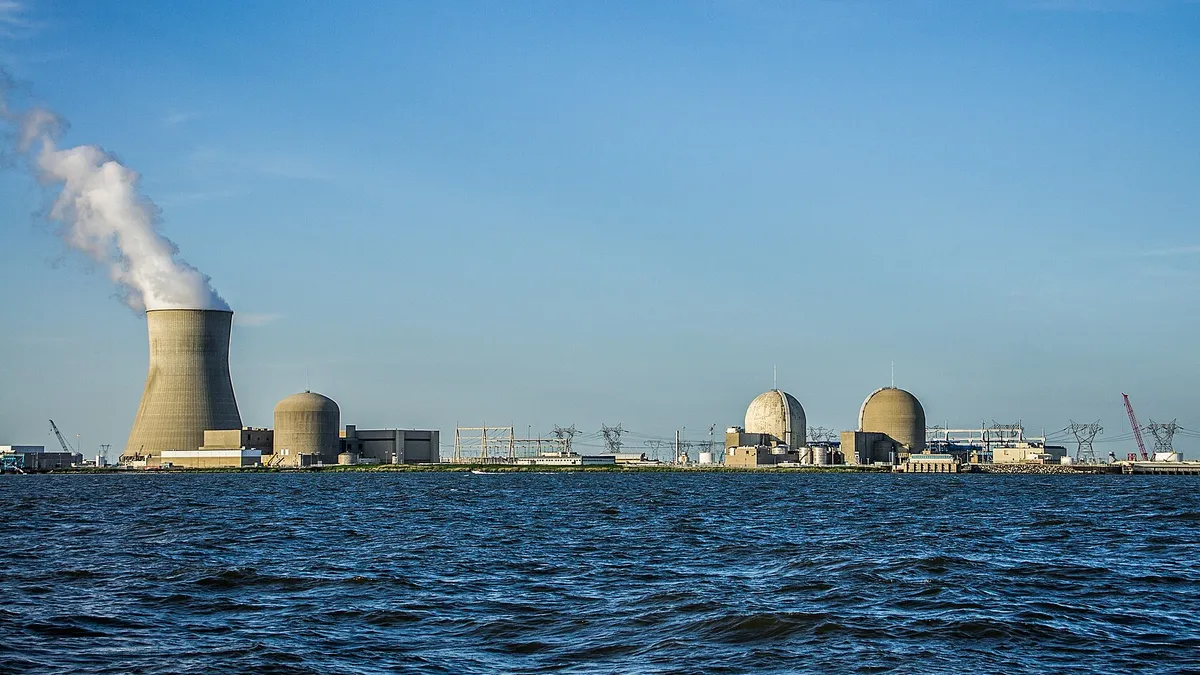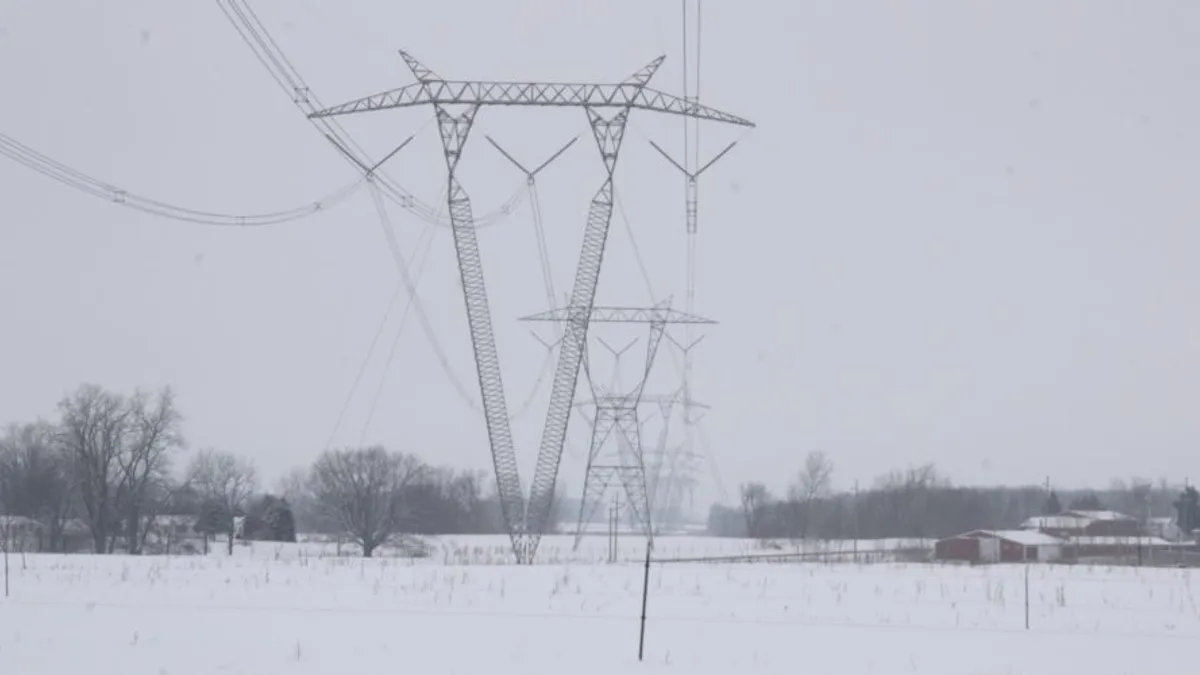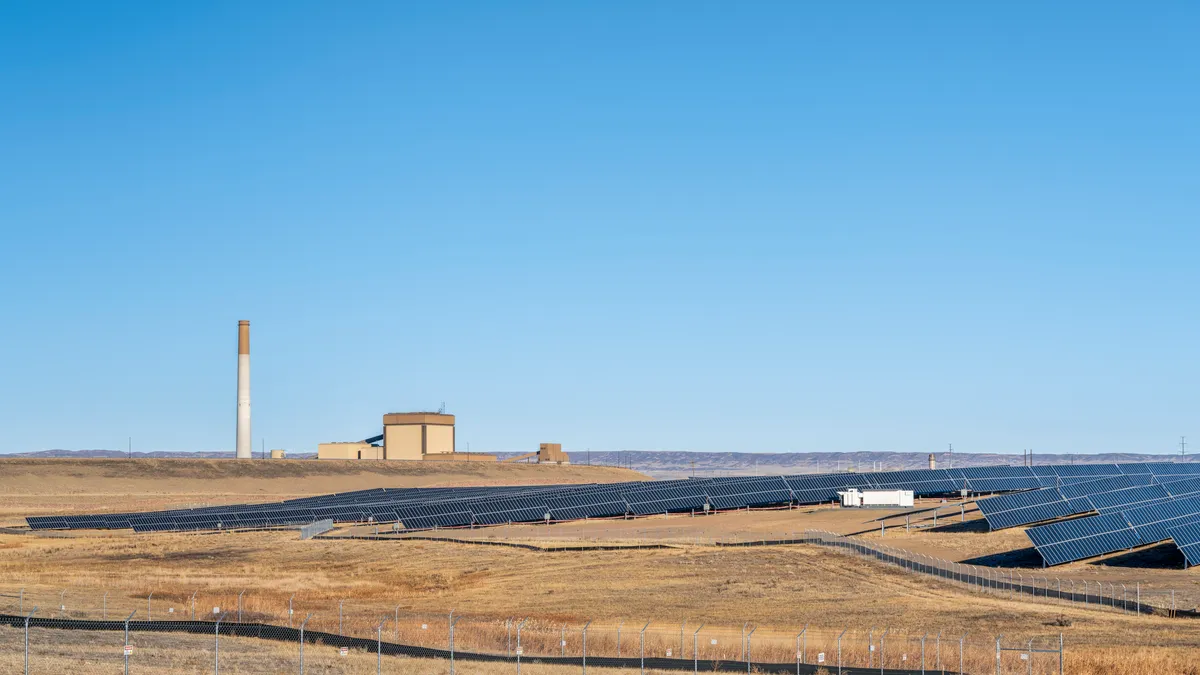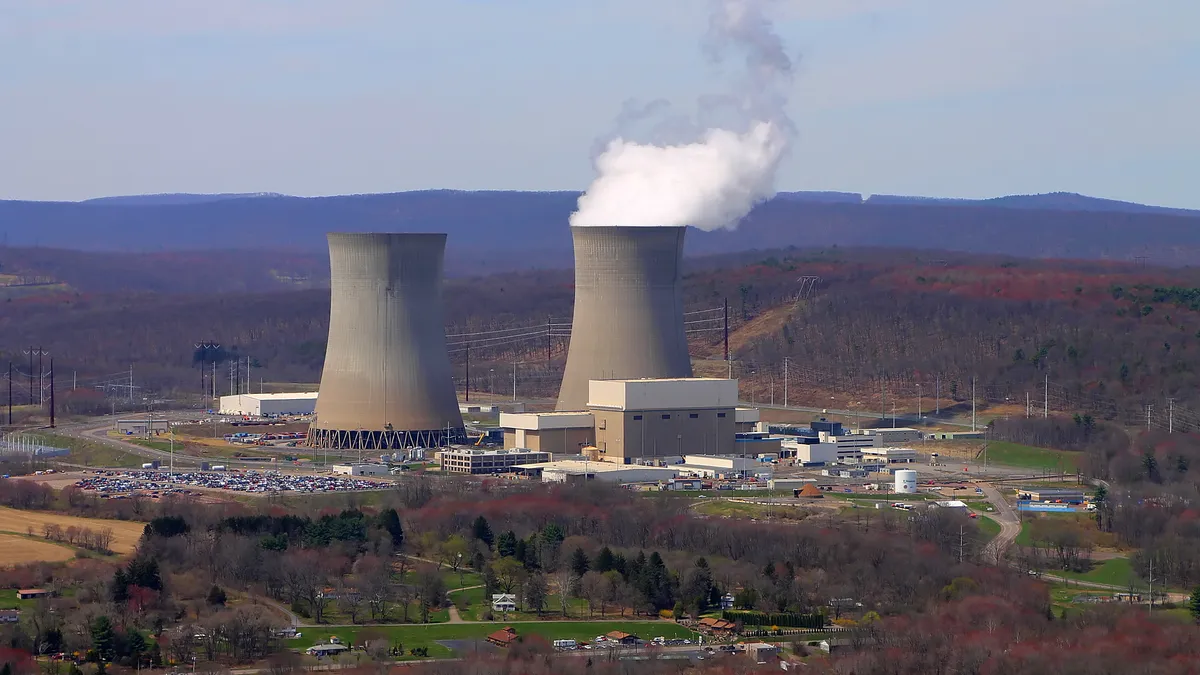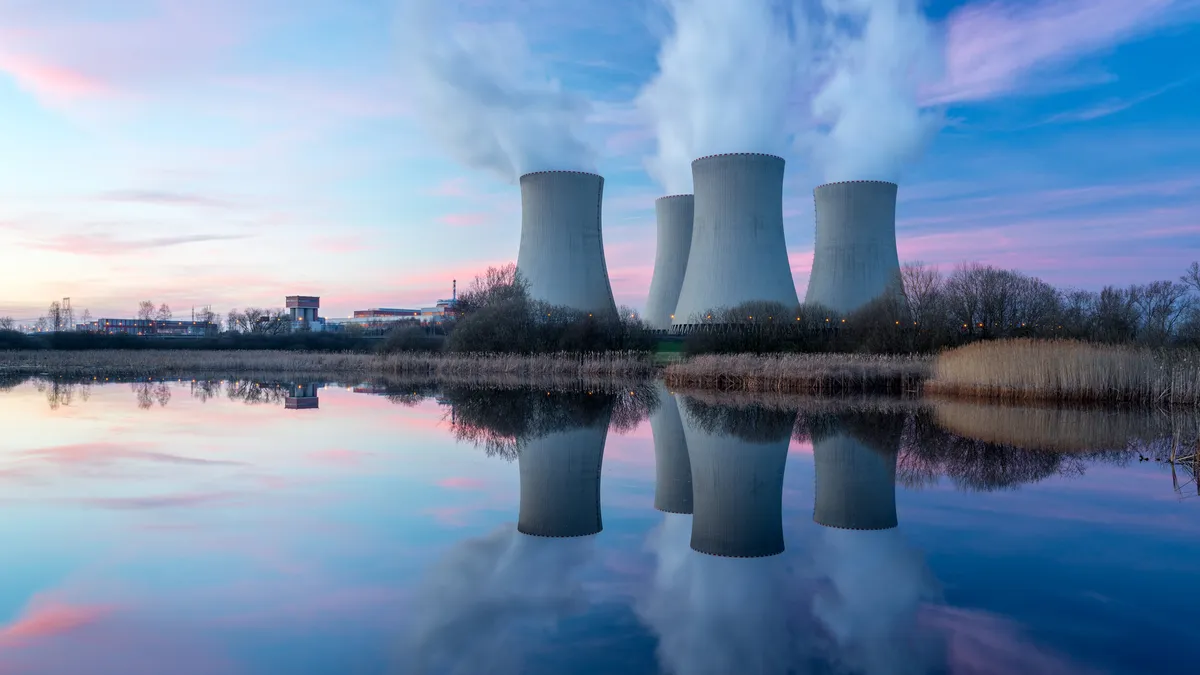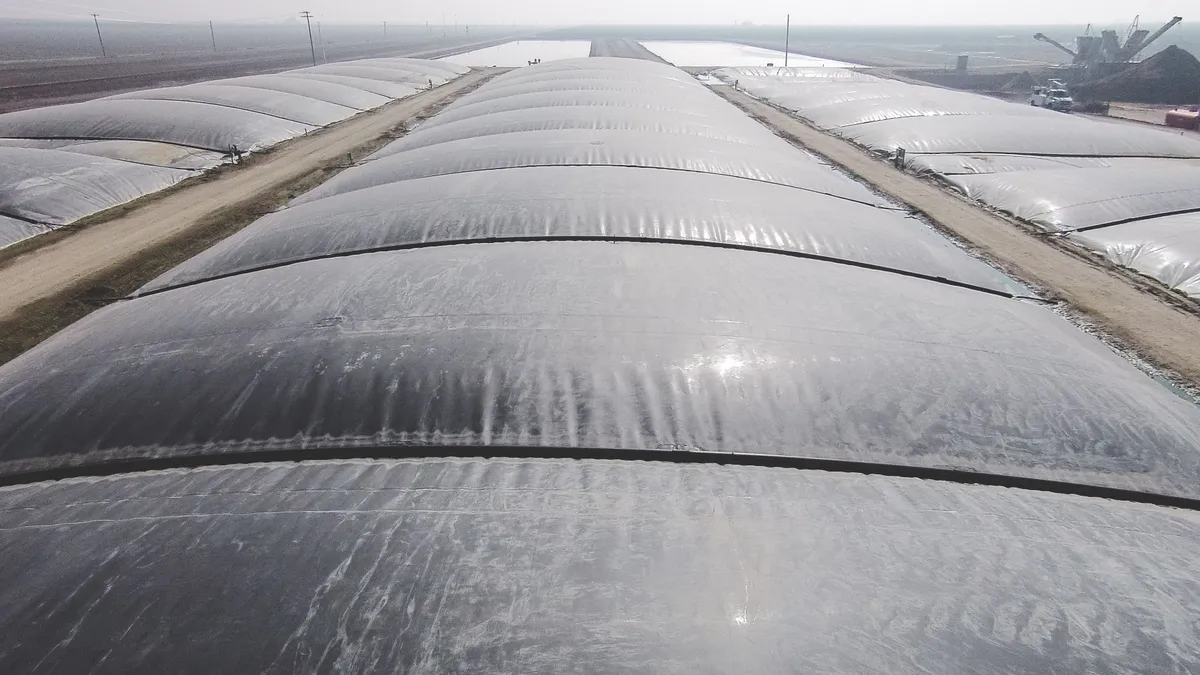The fallout from Westinghouse Electric’s chapter 11 bankruptcy filing is multi-faceted and still unfolding.
At the least, it is toxic news for the fate of the only nuclear projects to begin construction in the United States in three decades: the addition of two 1,100 MW reactors to Georgia Power’s Vogtle nuclear plant near Waynesboro, Ga., and the addition of two reactors of the same design to the V.C. Summer plant in Jenkinsville, S.C.
At the worst, Westinghouse’s collapse could spell the end of any nuclear build-out in the United States — at least under current designs — and lead to the abandonment of those two projects.
Both the Vogtle and V.C. Summer projects use new technology — Westinghouse’s AP1000 advanced pressurized water reactor — that can cool the nuclear core even in the absence of operator interventions or mechanical assistance.
As it became apparent that a bankruptcy filing was inevitable, Moody’s Investors Service assigned negative outlooks to all five utility companies involved in the projects.
Moody’s action applied to the Vogtle entities: Georgia Power, a subsidiary of Southern Co., Oglethorpe Power and the Municipal Electric Authority of Georgia; and to the entities building the Summer project: SCANA Corp. and its South Carolina Electric and Gas subsidiary, and to the South Carolina Public Service Authority (Santee Cooper).
Moody’s said the negative outlook reflected the increased credit and regulatory risk resulting from the bankruptcy and the weakened financial condition of Toshiba, Westinghouse’s parent company. Toshiba in February took a $6.3 billion write-down related to Westinghouse’s cost overruns at the two U.S. nuclear projects.
Cost overruns and missed deadlines have long plagued nuclear plant construction. Of the 54 reactors under construction around the world, 33 are behind schedule.
When the Vogtle expansion project began in 2009 the project had an estimated cost of about $14 billion, and the online dates for the two reactors were 2016 and 2017. The most recent cost estimate is about $21 billion.
In December, regulators approved Georgia Power’s request to raise the costs of its approximately 45% share in the Vogtle project by $1.3 billion to $5.68 billion. The approval came after the utility agreed to pay $350 million to resolve a dispute with Westinghouse and CB&I Stone & Webster. The two units are now due online in 2019 and 2020, more than three years behind schedule.
The original cost of the V.C. Summer project in 2008 was about $9.8 billion. It is now about $14 billion. In November, South Carolina regulators agreed to raise SCANA’s 55% share of the Summer project’s cost by $831 million to $7.7 billion. SCANA also reached a settlement with Westinghouse and CB&I that resulted in new 2019 and 2020 deadlines for the reactors. The new reactors were originally scheduled to enter service in 2017 and 2018.
In October 2015 Westinghouse bought nuclear contractor CB&I Stone & Webster for $229 million in an effort to help contain costs by taking over the construction function.
Westinghouse became the engineering-procurement-construction manager, and Fluor the general contractor. “Westinghouse is now in charge of everything,” Westinghouse CEO Danny Roderick said at the time.
Both Southern and SCANA signed new, fixed-price – rather than cost-plus – contracts with Westinghouse, another indication of efforts at cost containment by the utility companies.
Moral commitments
Now those utilities have to decide whether or not to proceed with the projects. SCANA and its partners have said their preference is to complete the Summer project.
Southern CEO Thomas Fanning flew to Tokyo in less than a day after the bankruptcy filing to talk to Toshiba CEO Satoshi Tsunakawa in an effort to confirm Toshiba’s “moral commitments” to backstop Westinghouse’s contracts to complete the project.
For now, construction on both projects continues and most likely will continue while the various parties try to reach some sort of agreement. Analysts say that could come by the end of April.
One of the most pressing questions is whether or not Westinghouse will reject the construction contracts in bankruptcy. But the possibilities and ramifications are far more complex than that.
Westinghouse could continue to perform under the existing contracts with a worst case scenario that there would be more cost increases that would be covered by existing letters of credit or handled as liquidated damages covered by Toshiba’s guarantees that back up Westinghouse.
Westinghouse also has $800 million in debtor-in-possession financing to support continued performance.
Barclays analyst Daniel Ford estimates that the Toshiba guarantee is worth about $1.7 billion to SCANA and about $3.85 billion to Southern. SCANA’s guarantee covers 20% of costs. Southern’s guarantee covers 40% of value of the EPC contract, should Westinghouse fail to complete the project.
In a March 31 report, Standard & Poor’s Ratings analyst Dimtri Nikas referred to the continuing performance possibility as the “wishful thinking scenario.”
And in a March 30 report, UBS analyst Julien Dumoulin-Smith said both SCANA and Southern appear to be planning for Westinghouse to abandon the projects.
That leads to the likely scenario that Westinghouse will reject the contracts. It was the financial burden of the contracts, after all, that prompted the Westinghouse to file for bankruptcy in the first place.
In that scenario, Nikas expects both utilities would move forward with their respective projects on their own. Not doing so would leave gaping holes in their rate base growth projections.
But given the scale of costs involved, Nikas says neither utility would likely move forward with construction unless they have “complete and irrefutable assurance from their respective regulators that they will be able to recover all costs that are incremental to the amounts currently certified.”
Work in progress
As of March 30, both Georgia Power and SCE&G had entered into interim agreements to work directly with Fluor, Westinghouse’s subcontractor on the projects.
Longer term, however, new contracts will have to be drawn up for work to continue, and it seems likely that any new contract would be on a cost-plus basis that would shift cost overruns on the utilities and possibly their ratepayers.
As the details of new contracts are worked out, SCANA and Southern would also have to seek approval of the arrangement with their co-owners. If they don’t sign off, the situation would become much more complex.
Regulators in Georgia and South Carolina would then have to sign off on the new contracts. In the regulatory process, the sponsors of the nuclear projects could have to make the case why continuing with the nuclear projects would be more cost effective or more prudent than building a new combined-cycle gas turbine plant, especially since some of the work already done and equipment already ordered could be converted to that purpose.
If the regulators approve the self-build option, the owners could escape Westinghouse’s meltdown relatively unscathed.
If regulators reject the self-build option, Nikas says the next logical step for SCANA and Southern would be to abandon the projects. He notes that legislation in both states provides for cost recovery of abandoned projects.
While abandonment is an option, equity analyst Dumoulin-Smith says both SCG&E and Southern “pushing aggressively to reach a more constructive solution to finish the plants.”
Viewed from the debt side, however, S&P says abandoning the projects may be the “better option.” It could allow both the recovery of the abandoned investment, as well as cost recovery of a new generation source to replace the nuclear plants.
Under law in both states Georgia Power and SCE&G have both been collecting revenues to recover the financing costs in their projects. Those revenues would stop, if the projects are abandoned, but Nikas says it is possible that the existing payment mechanism could be used to recover the abandoned investment and to pay for the construction of a new plants, with a possible “modest or manageable further increase in base rates.”
The outlook for the Vogtle project is further complicated by $8.3 billion in federal loans guarantees. Westinghouse’s bankruptcy filing could trigger repayment provisions in the loan agreement.
Both projects are also working against a Dec. 31, 2020, in-service deadline to be eligible for a $0.018/kWh federal production tax credit. Any further slippage in the construction schedule could disqualify the projects for that credit.
It is possible that both nuclear projects could be completed and that their owners will emerge from the process with little damage. But Westinghouse’s bankruptcy is likely to have more lasting implications on the prospects of any new nuclear plants being built in the United States.
Vogtle and Summer were being closely watched as a gauge of the cost and risks of building new nuclear plants. The cost overruns and scheduling delays were damaging enough for nuclear prospects, but Westinghouse’s bankruptcy could close that door for decades to come.
A February article in MIT Technology Review argued that the bankruptcy could “doom” new nuclear construction in the U.S.
The bankruptcy “is a powerful signal of the end of the fantasy of a nuclear revival,” Daniel Hirsch, director of the program on environmental and nuclear policy at the University of California, Santa Cruz, told the Christian Science Monitor.
With Westinghouse's reactor design off the table, nuclear supporters may have to pin their hopes to next-generation technologies such as small modular reactors (SMRs). Developer NuScale Power submitted the first designs for SMRs to the U.S. Nuclear Regulatory Commission in January, a first step toward permitting, but the company does not expect to have a commercial offering for about a decade.







